Photo by Gabriel Berent
Mark J. Ferrari is a writer whose first novel, The Book of Joby, is available from Tor.
The Book of Joby is about a new incarnation of the age-old wager between God and Lucifer, but the stakes are higher than ever before. If Lucifer wins, he gets to destroy the Earth and create it the way he wishes to. The subject of the wager is God’s chosen champion: Ânine-year-old Joby Petersen. Lucifer has to corrupt him by his fortieth birthday to win the bet.
I really enjoyed this novel, one of the few that I’ve thoroughly enjoyed since I started writing. Mark takes on the divine with a nonchalance reminiscent of Terry Pratchett and Neil Gaiman, but in a way uniquely his own. I can’t wait to find out how it ends.
Also, check out Mark’s website for artwork, excerpts from The Book of Joby, and more.
Mark, thanks for agreeing to this interview.
David Steffen: Where did you get the idea for The Book of Joby? Had it been in your head for a long time before you wrote it?
Mark J. Ferrari: The Book of Joby accumulated something like a fossil bed, one layer at a time over many, many years. In part it was simply inspired by the kinds of experience I had as a kid reading fantasy. ‘What would I do if I were that character in the middle of such a story? Would being that protagonist turn out to be as much fun as it was to read about, or would being a hero turn out to be a lot more frightening and confusing than the stories make it sound?’
Many, many years later, I found myself living in a tiny, isolated, and unbelievably picturesque coastal town in Northern California. If there are any magical places on this real earth, that place is one. Living there, it became easy , almost inevitable , to find myself once again contemplating the magical potential of everyday life , of living inside some remarkable story. During my 15 years there, I was profoundly privileged to be welcomed very deeply into the life of a community that the flocks of tourists filling our town’s streets never see. At no time in my life have I ever felt as fully ‘at home’ as I did living in that town, and do not expect ever to feel so much at home again. I have never encountered such a concentration of exquisitely creative and idiosyncratic individuals, nor found children so full of life and expectation, creative play, so prone to dream aloud, or so comfortable with themselves and each other as I did doing volunteer work with that small town’s schools. Those students taught me as much or more about what life could be, maybe should be , about what I might do , even about who I was, than anyone anywhere ever had before , and I was in my mid thirty’s by then.
One year, three of those children, among the town’s brightest and best, died in separate, unrelated accidents, spaced almost exactly two months apart. It began to seem ‘intentional’ in some horrible way. The town’s official population at that time was 1,100 people. We nearly all knew each other personally. To say that the community was rocked by this triple punch does not begin to do the ordeal justice. Because of my long involvement with the town’s schools, and thus these children and their families and friends, I was invited more deeply than one might expect into the grieving processes that all of us were touched by to one degree or another. By far the greatest impact these events had on me came not from the deaths themselves, but from the remarkably genuine, probing, and communal ways these kids’ families, friends, and community dealt with their loss. At some point in life, I suspect most people are moved to ask such questions as, Why do such bad things happen to such good people? If there is a God, why doesn’t he intervene? What does one do about anger , one’s own, or other peoples? What is justice, and how much ought one do in pursuit of it? How much control can we have over the world around us, and how far should one go to seize such control? That year these questions were asked on an almost daily basis by an entire community for ten months or more.
This novel does not even attempt to answer any of those questions. It was merely inspired by all of them. Watching that remarkable community struggle with these questions in their own remarkable ways left me changed in many ways, and set me to imagining what the protagonists in the books I have always loved to read would do in an adventure where absolutely nothing ever went as it ‘should,’ for reasons no one could explain or even guess at. One night, as I lay in bed, I realized that the biblical story of Job was the perfect framework to hang such a story on, the Arthurian icons and ‘fairy worlds’ of my childhood fantasies, the perfect character set in which to clothe that remarkable community of eccentric saints and bodhisattvas. The rest tumbled out almost of its own accord.
Some have leapt to the assumption that because I framed the story in such an overt Judeo-Christian format, that the novel is intended to be ‘Christian literature.’ But this is actually not the case. As I have no interest in championing or attacking Christianity, or any of the worlds other vast array spiritual traditions, you will find both very sympathetic and very unsympathetic ‘Christian’ characters in the novel, as well as sympathetic and unsympathetic liberal and conservative, rich and poor, male and female, young and old characters.
A tale imbued with such overtly ‘religious’ cast and subject matter cannot avoid suggesting theological statements , intended or otherwise – but some aspects of the story clearly depart from standard Christian doctrine. And my primary ambition while ‘playing in this field’ was just to use ‘stories and archetypes’ from my own American culture’s mythology rather than from the Celtic, Norse, or Asian mythologies so many of our novels co-opt. For more about this aspect of my intentions in The Book of Joby, see the FAQ page on my website.
David: Did you submit directly to publishers, or did you submit to agents first?
Mark: I submitted to neither, actually. My particular path to publication was as ‘unusual’ as it is probably nontransferable.
While writing the book, I was extremely fortunate to have significant editorial help from a well known and respected freelance editor named Debbie Notkin, whom I had known for many years. Working with her over several years and various versions of this book was not only crucial to my own education about how to write well, but also, I suspect, lent a certain credibility to the project along the way. People in the business probably figured that if Debbie had been helping me with this, it might not be a total fool’s errand.
Also, because I’d been known and generously welcome for a number of years in the science fiction/fantasy community as a professional illustrator, I was allowed opportunities at various science fiction conventions I attended to do readings from this book while it was still in progress. Thus, by the time it was finished, lots of people, some of them established authors and professional editors, already knew of its existence and had heard that it was ‘pretty good’ from those who’d come to my readings.
Within months of completing the manuscript, virtually before submitting it to anyone at all, I was approached by a mid-sized science fiction/fantasy publisher who had already been aware of the ‘work in progress’ for some time. They wanted to publish it, and seemed a very good fit at the time, both for me and for my rather unusual book. Their offer helped me to solve the age old conundrum about not being able to get a publishing deal without an agent, and not being able to get an agent without a publishing deal. Because I had an offer, I was able to secure the services of a good agent to whom I was recommended by a friend and author already represented by her. I worked with her and the publisher very happily for nearly two years preparing for a pretty well publicized release date as one of their “spotlight selections” for 2004.
Sadly, a month and a half before The Book of Joby was supposed to hit store shelves, the publisher announced that , for reasons still unclear to this day , they would have to cancel a number of their intended 2004 titles, including mine. This seemed like pretty bad luck at the time, but it has become axiomatic with me that one can never tell what one’s luck means ‘at the time.’ My agent took the by then very well publicized book straight to Tor, who expressed their interest quickly. In hindsight, it seems clear to me that by mishandling things as they did, that earlier publisher probably accelerated my career path considerably.
David: Any advice on finding and dealing with agents?
Mark: Yes. Know who the agents you want to approach are, what kind of writing they sell, and how effectively they sell it, before approaching them. Then expend the time and care to find one you feel comfortable with, who really seems to like YOU the way you are, and who is generally enthusiastic about what you are already writing, the way you are already writing it.
I think most agents will and should provide their authors with editorial input , which should be seriously considered, especially by those of us who are new to publishing. In general, however, you want someone interested in representing ‘what you write,’ not what you ‘might write instead someday if pressed hard enough to do so.’ The agent/author relationship is a partnership, and if it is to work, each must make an effort to help the other succeed in all sorts of ways. But at the end of the day, you are paying someone to HELP YOU sell YOUR work. If an agent seems chronically unhappy with you or what you write, keep looking. One is unlikely to effectively promote you or your work to others if they do not like the person or the product much themselves.
David: Can you give us an overview to how the process worked from submission to publication? How long from the day you dropped it in the mailbox to Tor to the day one could buy it in a bookstore?
Mark: As I’ve said, I was unusually fortunate in never having to drop anything in a mailbox, and suspect that part may have taken quite a while, if I’d had to go that way. As for the rest, though, from the day Tor said they were interested in purchasing the book until the day they actually provided and signed a contract was nearly a year. From the time the contract was signed to the day the book appeared on bookshelves was about two more years.
The process may be less glacial for a more established author, but there are A LOT of time consuming things that have to happen between the day a book is bought and the day it hits store shelves. At a large publisher there are already dozens of books in the pipeline when yours shows up. And all those must be completed before yours is. Then, in addition to all the arduous editing and production tasks involved in simply creating thousands of copies of a book, there are even more complex marketing and distribution agreements and logistics that have to be negotiated and executed before release. In short, Rome ain’t sold in a day. And selling Fresno can take even longer.
Along the way, the author will likely be asked to re-write large portions of the original manuscript for all sorts of reasons. Then a galley will be sent to the author to be read through page by page for errors, which must all be corrected and sent back. Then a second galley sent so the author can check the corrections and all else one last time before printing. You may think that when the first draft is done and sold, you’re done too, but even the author has LOTS of work ahead of him between that bright moment of sale, and publication.
David: In what environment do you prefer to write? In coffee houses? At home? With music?
Mark: Back when I had a quieter, more private ‘home,’ I liked to write in a kind of studio I had set up there. At the moment, I rent a room in a boarding house full of students, which is not conducive to concentration. Currently, my favorite place to write is a beautiful graduate library reading room on the University of Washington campus several blocks from where I live. Wherever I do write though, music is a MUST for me. Mostly soundtracks, classical, or other ‘narrative,’ ‘non-lyrics’ stuff. Happily, we live in an age where all the music you will ever want or need fits comfortably in a laptop, accessible anywhere through a pair of headphones.
David: How did you react when you received your first offer from Tor?
Mark: I was phoned with the news while driving between Omaha, NE and Portland, OR on business, and was ecstatic, though the cell signal died in the middle of my agent’s announcement, and I had to wait several hours for the remaining details.
David: If you could give only one piece of advice to aspiring writers, what would it be?
Mark: Read! A lot!
Write what you love , not what you think will sell , just the way you’d really want to read it.
If your satisfaction or persistence as a writer is dependent on the approval of others, or on some level of monetary reward, don’t even attempt to publish.
Write for your own enjoyment. If that is not enough incentive, move on to something else you enjoy more. If however, you love the act of writing itself so much that you literally can’t help doing it, and would go right on even if no one ever published you, or ‘approved’ of what you wanted to write, or of how you wanted to write it, or paid you a cent , then who can stop you? Write away and enjoy it like crazy. The rest , if there is any rest , will be frosting.
David: More specifically, what advice do you have for writers who’d like to get a book deal with Tor?
Mark: First of all, FINISH writing a book. Don’t bother Tor – or any other publisher – before you have done so at least once.
Second, when your manuscript is finished , and you’ve had some time to reflect on it, and revise and polish appropriately, and you’re pretty sure it’s really ready for the light, look at what Tor has been publishing lately, and ask yourself, “Does what I’ve written , and what I want to write , bear ANY resemblance to ANYTHING they’re publishing?” †I didn’t do that. The jury is still out on just how remiss of me that was, and what it may cost me in the end. But these days I’m thinking it’s probably unwise even to try hitching yourself to a publisher who doesn’t already publish the kind of thing you want to write.
When you’ve done all the above, and still wish to proceed, go to Tor’s website, read their submission guidelines carefully, and follow them to the letter. While doing that, get online and start researching agents. When you find some who represent authors writing stuff like what you want to write, read their submission guidelines carefully, and follow those to the letter too.
Then pray for luck, and see what happens.
Or, I suppose you could try my route instead. Just secure the services of a brilliant editor willing to teach you how to ‘write much gooder,’ then parlay your rep as an illustrator into several years of convention readings from your unfinished book, (which had better be much, much gooder than expected by then), attract the attention of a nice midsized publisher before you’ve even completed it, get an offer from them right out the gate when it’s done, get an agent on the basis of their offer, get abandoned by that first publisher , through no fault of your own – just before publication, and have your agent take it to Tor instead. If I wrote that in a novel, though, it would be rejected by the editor as ‘improbable’ or worse.
If all else fails, look for unique side and back doors of your own. If you don’t know what I mean by that †return to paragraph one of this answer.
David: What did you do to help market your book?
Mark: I read from it , for years – to anyone who’d listen. I talked about it , for years – to anyone who’d listen. When Tor bought it, I told everyone who’d listen. When it was released, I gave up four months of income and put my entire, not inconsiderable, book advance right back into a self funded, seven states, coast to coast, book tour. For four months, I did trade shows, (arranged by Tor), radio shows at 5AM, (arranged by my agent), many book store appearances for anywhere from 60 to 3 people, (arranged by me), high school talks in places like Potter, Nebraska (population 150), home book group appearances, science fiction society meeting addresses, (all also arranged by me). And on all the planes and trains in between, I talked about all of it to anyone who would listen. When I get email from a fan, I make sure I answer every one , the minute I read it, if at all possible. I made sure I had a website focused on the novel and its progress that people would want to visit , at least, back when I could afford the webmaster to run that.
How much good has all that done? I’ll never know. While ‘on tour,’ I inadvertently lost my job for another five months after coming home, so it’s made me poorer financially than I ever imagined, but the book sold many times what is considered ‘normal’ for a first fantasy novel by an unknown author. Tor is responsible for most of that, I’m sure, in the way they marketed the book to the big chains and independent book sellers before it was released, but no one can say I wasn’t also willing to work hard to encourage my own success , to however much , or little , effect. There is much more I could have done , especially online – had I known what I know now, and I will try to do it all better next time I get the chance.
David: You have quotes on your cover from Kevin J. Anderson and David Farland. How do you get those awesome quotes?
Mark: Kevin Anderson has been a supportive friend for many years, and was kind enough to support my book in that way , though, I do not believe he would have done so if he hadn’t meant what he said about it. The rest of those generous quotes were arranged by Tor, and I am grateful to all of those authors for their kind opinions.
David: Have you tried your hand with short stories?
Mark: Not much. Writing epic novels does not intimidate me much. Trying to write anything worth saying in under 400 pages scares the hell out of me. I regard the ability to do so as a superpower, and the people who do it well , Jay Lake, for instance , as superheroes of the first order.
As it happens, however, I did recently write a story that is only 7,800 words long , almost short enough to be a legitimate short story. I have no idea whether it is any good, but am having myself fitted for a tight, neoprene suit as we speak , just in case.
David: You were an artist first. What made you decide to take up writing? When did you start? Was it easier or harder than you expected it to be? And how does the creative experience of being a writer differ from that of being an artist?
Mark: They are not that much different to me. They are both ‘story telling’ activities, and , for me at least , both very ‘visual.’
I have always loved to read and write as well as draw. In Junior high, I often turned in History and Science reports that were 90 to 100 pages long , fully illustrated. My teachers grew noticeably older during the few years I was with them. Basically, I am a compulsive story teller, and after years of trying , very enjoyably and profitably most of the time , to tell my stories one slowly rendered frame at a time in pictures, I finally figured out that one book is worth thousands and thousands of pictures. When a head-on collision back in 2000, between myself on a mountain bike and large panel truck, ended my ability to render pictures in colored pencil, (my specialty back then), it just gave me some kind of ‘permission’ to turn to writing instead. I have found that I enjoy this new art form even more than I enjoyed the last one, and frankly, I am still creating pictures , many more of them much faster than I used to, in fact. I’m just doing it in words now. Anyone who knows my artwork, and has read my novel will tell you that they are both very ‘visual.’
As I’ve also mentioned on my website, while the hardest part for me about illustration was often getting started, the hardest thing about writing has often been making myself stop. Quite literally. It’s like watching a long movie in my head, which I’ve got to translate to paper as quickly and expressively as possible. Time almost ceases to exist while I’m at it. There have been occasions when I’ve sat down at my desktop after breakfast and looked up half an hour later to find the sun setting. Knowing this, it may come as no surprise to learn that half my writing process is subtractive. All this stuff gushes out, and I spend nearly as much time trying to remove the huge amounts of ‘literary packing peanuts’ in which the actual story is left swimming.
David: Do you still work on the art as well as the writing?
Mark: Yes. For a day job, I do digital background and interface art for computer games at Griptonite Games in Kirkland, WA. Since my digital art process does not involve hand rendering, (I don’t use a ‘tablet.’), my biking accident hasn’t had any impact on that.
David: Do you have any upcoming convention appearances?
Mark: I hope to be at World Fantasy Con on Halloween weekend, Orycon in November, and both Norwescon and Westercon this year.
David: What do you like to do when you’re not reading or writing?
Mark: Everything else. I love to travel when I have the finances for it. I like to backpack, bike, ski, and swim. I love books, music and film. When I had an apartment of my own, I loved to cook and ‘entertain.’ Back when I had a yard, I liked to garden. I am a very ‘social’ person, with an amazing number of really unusual and remarkably achieved friends. As a person , and a writer – I think it’s very desirable to have as large and creative a life outside of writing as possible , since that life provides most of the raw materials my stories are made of. Lose your ‘life outside of writing,’ and I’ll bet you soon have little or nothing vibrant to write about either.
For instance, last winter I lived for a while in a genuine ‘flop house:’ boarded up windows, rats the size of house cats, heroin addicts, meth freaks , even an excrement artist, (though, conveniently, he was involuntarily committed a few weeks after I moved in , literally scooped off the street into a van by ‘authorities’ while he was punching windows out of parked cars in front of the building one day). I am certainly glad to be out of there now, but talk about MATERIAL! That winter will enrich all sorts of novels, including the one I am currently working on.
David: What was the last book you read?
Mark: The last few were Tigerheart by Peter David, (Funny, moving, dramatic, EXCELLENT!), The Solitudes by John Crowley, (Lyrical, quietly but powerfully magical – often ‘just beyond one’s line of sight’ , which I love most.), and Snake Agent by Liz Williams, (Inventive and very entertaining.)
David: Your favorite book?
Mark: Not a fair question. Impossible to answer ‘accurately.’ But among my top pantheon are , in no meaningful order: Little Big by John Crowley, Songs of Earth and Power by Greg Bear, Jonathan Strange and Mr. Norrell by Susanna Clark, The Last Light of The Sun by Guy Gavriel Kay, Once and Future King by T.H. White, Galveston by Sean Stewart, Od Magic by Patricia McKillip, The Sparrow by Mary Dorea Russell, The Miracle Life of Edgar Mint by Brady Udall, Life of Pi by Yann Martel, and anything at all by Ursula LeGuin,
David: Who is your favorite author?
Mark: An even less fair or answerable question, but if I must slice the baby up that way, it’s a tie between Ursula LeGuin and John Crowley. Why oh why do you ask such things?
David: What was the last movie you saw?
Mark: The last several were all best called ‘forgettable.’ The last INTERESTING movie I saw was called 500 Days of Sunshine , which was funny, uncomfortable, and wrenching by turns, and bore a more ‘realistic’ resemblance to any kind of actual ‘romance’ I have ever experienced in life than any movie I can remember seeing before.
David: What is your favorite movie?
Mark: More and more unanswerable questions! On my top shelf AT THE MOMENT are: Brick, The Fall, Kung Fu Hustle, The Bubble Boy, and Pleasantville. Yes, I know , a VERY mixed bag. So, David, which of last spring’s flowers do YOU think was prettiest? †Last summer’s fruit most delicious? †last night’s stars most twinkly? â€
David: How is the next book coming along? Do you have an estimated timeline of when it will come out? Can you tell us a little bit about it?
Mark: The next book , currently , is called TWICE. I think you know more than most about it already. Feel free to tell your readers why. It’s a single volume, stand alone, ‘urban fantasy’ about a man who may or may not have been beaten to death by a troll in an alleyway on the night of his 50th birthday, a very ill-conceived ‘dying wish,’ and what happens after he awakens to find his poorly conceived wish granted. †It’s brilliant, of course , or will be when it’s finished , thanks in part to YOU. Not sure what else to say at this point.
Happily, the first 200 pages went to my editor at Tor about a month ago, and I heard last week that they are interested in buying and publishing it. Hooray! †If I were to finish the last two-thirds in the next six months, and Tor were to sign the contract one day later, given past experience, it might be out†two years after that?
Publishing, like life in general, seems to be a crap shoot, partner. But I still have high, high hopes. †We will see what the future brings.
Thanks for your interest, your help with the current manuscript, and your questions, David! I am hoping that your own writing and publishing endeavors all go well and weller!
J Mark

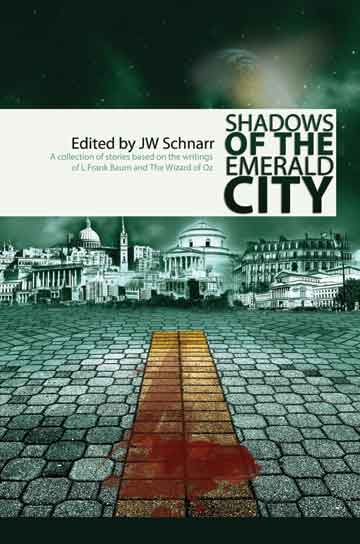 The first review of Shadows of the Emerald City has been posted on Wanderings Magazine.ÂÂ Even better, my story, “The Utility of Love” is one of only four mentioned by name (in a good way).
The first review of Shadows of the Emerald City has been posted on Wanderings Magazine.ÂÂ Even better, my story, “The Utility of Love” is one of only four mentioned by name (in a good way).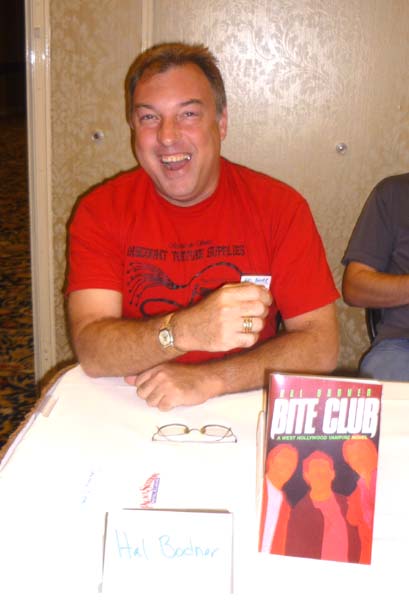

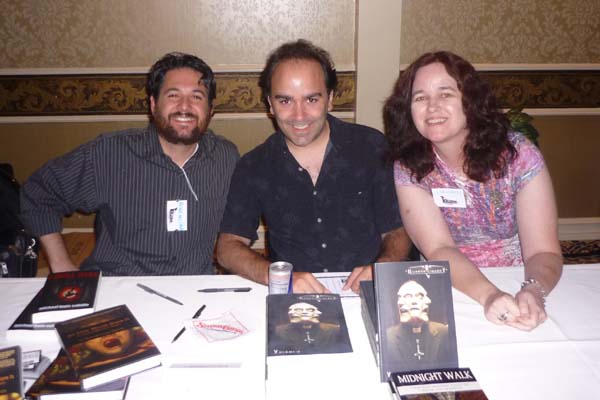
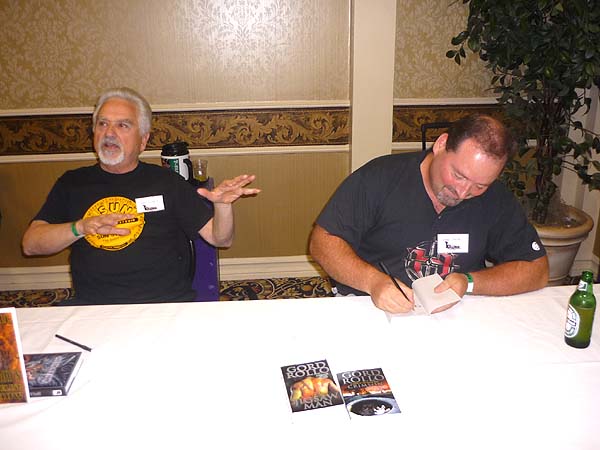
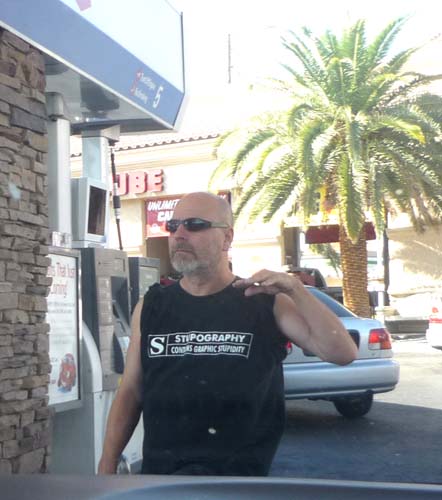
 Yes, I know I am a year behind but I bought this book before 25 became available AND this edition can be found in the stores today. So for readers that like to browse and choose the reading material from books on a shelf, this review is for you.
Yes, I know I am a year behind but I bought this book before 25 became available AND this edition can be found in the stores today. So for readers that like to browse and choose the reading material from books on a shelf, this review is for you.
 My wife and I took my mom to The Time Traveler’s Wife, a convoluted SF romance starring Eric Bana and Rachel McAdams. The movie is based on the book by the same name, written by Audrey Niffenegger. I haven’t read the book yet, but it’s on my must-read list. In the movie, Bana plays Henry, a man with an extremely rare genetic disorder which causes him to time travel both forward and backward. He has no control over when and where he goes. McAdams plays Clare, the title character who becomes his wife. Their relationship is… complicated. He meets her for the first time when he’s 20-something, and she’s in college. She meets him for the first time when he’s 40-something and she’s five years old. Like any relationship, they have good times and bad times, but unlike other relationships, the good times for one person often coincide with bad times for the other person.
My wife and I took my mom to The Time Traveler’s Wife, a convoluted SF romance starring Eric Bana and Rachel McAdams. The movie is based on the book by the same name, written by Audrey Niffenegger. I haven’t read the book yet, but it’s on my must-read list. In the movie, Bana plays Henry, a man with an extremely rare genetic disorder which causes him to time travel both forward and backward. He has no control over when and where he goes. McAdams plays Clare, the title character who becomes his wife. Their relationship is… complicated. He meets her for the first time when he’s 20-something, and she’s in college. She meets him for the first time when he’s 40-something and she’s five years old. Like any relationship, they have good times and bad times, but unlike other relationships, the good times for one person often coincide with bad times for the other person.


